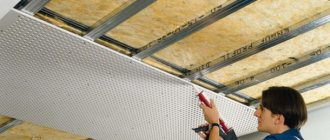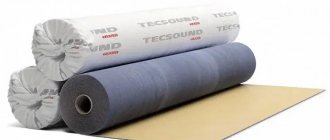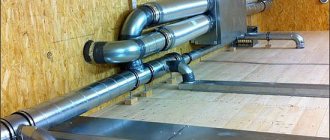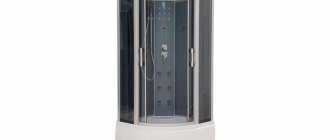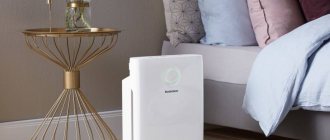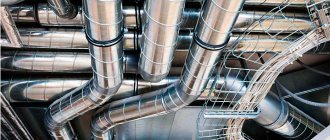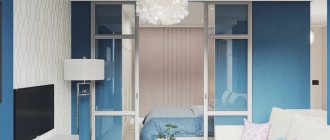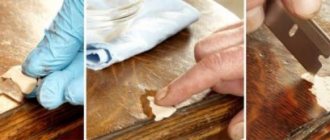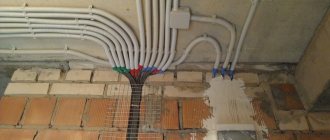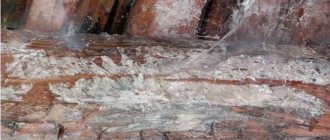Noises and sounds
Let's define the terms that are used in this article.
In physics, sound is understood as the propagation of elastic mechanical vibrations in a solid, liquid or gaseous medium.
The pitch of the sound is determined by the frequency of vibration. The human ear perceives sounds with frequencies ranging from 16 Hz (low) to 20 kHz (high). Sounds with a frequency below 16 Hz are called infrasound, and sounds with a frequency above 20 kHz are called ultrasound. Our ear cannot hear them.
The volume of sound depends on the amplitude of vibrations and the magnitude of sound pressure.
Distinguish between sounds and noises. Noise, unlike sound, contains several vibrations with different frequencies that propagate simultaneously.
The level (loudness) of noise is measured in decibels (dB). The permissible limit for residential premises is 55 dB during the day and 45 dB at night.
For comparison: being on a busy highway, a person experiences a load of 70-80 dB, a jet plane on takeoff produces a noise of 120 dB. Noise with a volume of 190 dB is fatal.
In this article we are not talking about musical works, so we call all annoying vibrations noise. And everything that puts a barrier to their spread is noise protection.
Sound reflection of materials
Sound reflection is the ability of a material to reflect sound waves. As a rule, smooth surfaces have a sound reflecting effect. Metal sheets, textolite slabs, glass and other smooth surfaces have excellent sound-reflecting properties. A marble wall is considered one of the most effective building materials for sound reflection. The smooth surface reflects sound without letting it in. Such structures are called marble acoustic mirrors.
@ProAntiShum
How noise affects human health
Noises affect a person on a mental and physical level. By affecting the psyche, they lead to nervous disorders, insomnia and stress. Constant stress destroys health and shortens life. According to doctors, they can take away 8-12 years of our stay in this world.
Noises, even not very loud, but prolonged, change the frequency of contractions of the heart muscle, lower and increase blood pressure, and reduce blood flow to the brain.
Scientists have found that after 10 years of living in a noisy city, people become more susceptible to various diseases. They have an increase in gastrointestinal diseases (gastritis and ulcers), hypertension, and coronary heart disease.
The nature of sound absorption
The fibrous structure of sound insulation is widely used in modern construction. Such slabs perfectly protect against airborne noise, providing comfortable conditions. Few people think about how sound absorption occurs, but everything is quite simple and easy to explain.
@ProAntiShum
It is worth understanding that when air with sound enters an insulating structure, the average sound absorption coefficient is that it rubs against the fibers of the product. Each fiber, due to friction and vibration, distributes sound, absorbing it. Depending on the noise level, the coefficient and the design index of the slab are selected. With proper calculation and installation, it is possible to provide the required level of protection with minimal material losses.
Types of noise
Three types of noise “walk” in the premises:
- air;
- shock;
- structural.
Airborne noise
Occurs when vibrations are emitted into space. Sources include moving cars, loud TV or radio, the sound of musical instruments, loud conversation.
Impact noise
This is the result of floor vibrations resulting from various objects falling to the floor, children running around, furniture moving, and impacts on pipes and walls during repairs.
Structure-borne noise
It is produced by booster pumps, elevators, and exhaust fans installed without noise protection. The vibrations of the mechanisms spread through the interconnected building structures, so they are felt even in apartments located far from the sources of this noise.
Some objects produce different types of noise at the same time. For example, a cement truck roaring uphill, hitting a pothole in the road with all its left wheels in turn, will become a source of both airborne and impact noise.
Dry screed (KNAUF-superfloor)
If you need basic floor sound insulation only from impact noise, then you can opt for fairly simple thin structures (without screed or joist system). Schumanet sound insulation or analogues are laid on the floor and the rolls are covered with gypsum fiber sheets or ready-made KNAUF-Superfloor elements. This design is quickly assembled and will not raise the floor level much. Thickness 2-3 cm.
GVL sheets can be replaced with special soundproofing panels with sand, 12 mm thick. An example of installing such sound insulation: DRY SCREED WITH SOUND INSULATION IN AN APARTMENT.
How to eliminate noise
Photo: depositphotos.com
Seal the cracks
Airborne noise mostly enters rooms through cracks. It, of course, gets there and through the walls, transferring some of the energy to them and causing them to vibrate, which our ear then hears. But in order to make a load-bearing wall vibrate to the point of irritation in the ears, you need to make noise behind it like a jet plane taking off.
Therefore, the fight against airborne noise, first of all, consists of eliminating cracks.
Seal leaks in window frames or install sealed plastic windows.
Thick doors, sealing gaps between walls and floors under baseboards, and eliminating voids in niches for sockets and switches will protect you from noisy neighbors on the side.
If these measures are not enough, use noise-proof materials to cover the walls, ceiling and floor.
However, it is possible that after sealing the cracks, protective coatings will not be needed, since the noise will decrease to a completely acceptable level. This is usually what happens.
Sound insulation is important for almost every resident of a multi-storey building - noise from the street and sounds from neighboring apartments interfere with rest. And if a double-glazed window with two or three cameras protects you from the hum of cars, then it is much more difficult to isolate yourself from neighbors with a piano and a loud dog. If you are planning a major renovation of your apartment, we advise you not to save space and at least isolate the bedroom - you will see that the quality of your sleep will improve. An additional bonus is that the soundproofing material will insulate the apartment, and heating bills will be lower. Thermal insulation is often ordered by owners of apartments with a loggia or balcony. 80-85% of our clients plan to use the balcony as an office or a place to relax, or combine it with a room. We insulate the walls, floor and ceiling with polystyrene foam - creating a “greenhouse effect”. Mineral wool and polyurethane are also popular. But remember that insulation alone is not enough - in winter you will need an additional source of heat. An infrared heater or electric heated floor will do.
Alexander Ambartsumyan
Leading site manager
Protect the ceiling
Regular impact noise comes from the ceiling because the floor of the neighbor's apartment is located above it. And people walk on it every day, and even in heels, they drop something on it, they move something on it.
The level of impact noise is reduced by noise-absorbing coatings. The simplest example is a long-pile carpet. Drop the second volume of John Galsworthy's The Forsyte Saga on it and repeat the experiment on bare parquet. If at this time the mother-in-law is peacefully dozing in the chair, she will no doubt agree that the difference in noise absorption is significant.
There are two ways to solve the problem of ceiling noise: either insulate your ceiling or the floor of your neighbors above.
The second option is more effective. But it cannot be implemented without the consent of those at the top. In an effort to interest them, tell them that impact noise travels not only horizontally, but also vertically (this is true). Therefore, by installing insulation, they will save not only you from noise, but also themselves: you won’t have to tiptoe around the living room when the children are sleeping in the bedroom.
As a clincher, offer to pay the costs. And then, in order not to lose money, make the same offer to the lower neighbors. But for your gender and for their money.
If negotiations with upstairs neighbors fail, strengthen the soundproofing of the ceiling.
As a standard option, a frame false ceiling design made of plasterboard is used (it is advisable to use vibration suspensions). The space of the frame is filled with noise-absorbing materials. Find out the details of arranging such a ceiling from specialized companies. The work is complex, so we do not recommend taking it on yourself.
Fiber sound absorbers
Currently, fibrous sound-absorbing building materials are the basis for construction. Such designs provide maximum effect against acoustic noise, while the characteristics of the products contribute to the use of the material for various indoor insulation options.
@ProAntiShum
Fiber building materials can be used for various types of surfaces and different installation methods can be used. If we talk about the most profitable option for sound insulation, then the fiber structure is the optimal solution for a residential building or apartment. Sound absorption rates for fibrous building materials can vary from 0.4 to 1.0. Also, do not forget about the benefits of fiber sound insulation; it is much cheaper than other product options.
How to get rid of structural noise
Structural noise, let us remind you, spreads through the supporting structures of the building. To get rid of it, the rigid connections between these structures and the apartment are destroyed.
In practice, this means insulating the entire apartment, rather than individual surfaces. This is the most difficult type of sound insulation. You can’t do this without the help of experts. The ceiling, floor and walls must be protected. It is necessary to separate the floor screed from the load-bearing walls by cutting out a groove in it and filling it with a noise-insulating compound (it dampens the vibration coming into the apartment through the ceilings).
For floors, ceilings and walls, use materials that have the same or similar noise absorption coefficients (we will discuss the characteristics of noise-protective materials below).
Effective protection against structural noise - “floating floor”. To install it, an elastic layer of sound insulation is laid on the floor slabs, and a screed is poured onto it. As a result, the floor loses its rigid connection with the floor slab; it seems to float on a layer of insulation, which absorbs outside noise.
Noise protection materials
Photo: depositphotos.com
Classification and characteristics
Materials that protect premises from noise are divided into noise-insulating and noise-absorbing. The former reflect noise, preventing it from penetrating inside, the latter dampen it, preventing it from being reflected from surfaces.
Insulators - any hard surface: metal, concrete, brick, wood. The harder the surface, the more effectively it reflects noise.
The main characteristic of insulating materials is the sound insulation index RW. It is measured in decibels. A brick wall 45 cm thick with a layer of plaster has RW = 55 dB, soundproofing panels “EkoZvukoIzol” 13 mm thick - 38 dB.
Sound absorbers, on the contrary, are soft. The softer the material, the more noise it dampens. Carpets, curtains, and mineral wool have absorbing properties.
The effectiveness of noise absorbers is characterized by the sound absorption coefficient A (sometimes denoted by the lowercase “a” or the Greek ά (alpha). The coefficient is the ratio of absorbed sound energy to the energy incident on the surface. The sound absorption of 1 m2 of an open window when a sound with a frequency of 1000 Hz passes through it is taken as a unit .
The sound absorption coefficient varies from 0 to 1. At a zero value, sound is completely reflected; with complete sound absorption, the coefficient is 1. Sound-absorbing materials include those that have an absorption coefficient of at least 0.4.
For comparison: the sound absorption coefficient of carpet is 0.70, glass wool is 0.80. But the brick wall is only 0.05, glass - 0.02.
Materials with noise-absorbing properties are installed indoors. The role of insulation is performed by the walls, floor and ceiling. However, in everyday life, dampers are also called sound insulators. There is no gross error in such a replacement of definitions. A layer of mineral wool laid on the inside of the walls of the room insulates it from external noise, dampening it in its thickness.
Protect your apartment from noise and keep warm
Any soundproofing material retains heat, and any heat-insulating material weakens sound. But these properties are not expressed equally in all materials. For example, polystyrene foam and polypropylene retain heat well, but are a weak barrier to sound.
However, there are coatings that can transmit both sound and heat to approximately equal extent.
When starting to soundproof an apartment, decide for yourself whether there is a need for insulation. If there is any, carry out sound and heat insulation work together, using appropriate materials.
This approach saves money and interior space. Because an effective soundproofing layer thickens the walls by about 5 cm. As a result, the volume of a room with an area of 18 m2 with a ceiling height of 2.5 m will decrease by 2 m3. If you add a thermal insulator, the layer will become even thicker.
Floor soundproofing panel systems ZIPS
Another option for floor soundproofing is the frameless ZIPS-floor system. These are sandwich panels that are laid on a pre-leveled floor. The disadvantage of this solution is the need to level the floor surface before installing the panels (presence of wet work) and poor sound insulation of the low-frequency component of penetrating noise. When installing ZIPS Floor, the floor level will rise by approximately 7-8 cm.
A detailed description of the diagram and details of installation with photographs on the FLOOR SOUND INSULATION page: ZIPS FLOOR VECTOR.
Sound-absorbing structures
Soundproofing boards can have a fibrous or porous base; the choice depends on the area of application and the characteristics of the canvas itself. It is worth noting that such products are used in the arrangement of cinemas, recording studios or concert halls. In addition, due to the environmental friendliness of the products, it is possible to soundproof residential premises, schools and kindergartens. The noise insulation coefficient of the materials on the wall will provide the necessary level of protection.
If you need to increase the degree of noise absorption, you can increase the number of plates used, which in turn will make the material even thicker. The right approach to solving the issue is guaranteed to make your home or premises comfortable and cozy. When choosing a suitable material, it is important to look at indicators such as the thickness of the slab and its soundproofing properties. To set the optimal parameters for a room, you need to choose the right sound insulation.
@ProAntiShum
Sound absorption structures have a perforated screen made of painted metal sheet, which repels sounds well without penetrating into the middle of the room. If we consider the design as a whole, then a breathable layer of canvas should be installed between the screen sheet and the fiber, which will retain small particles. Such designs can be used for any type of sound at different frequencies. Noise insulation using sound-absorbing structures will be maximum. Quite often such screens are used in decoration as anti-vandal.
